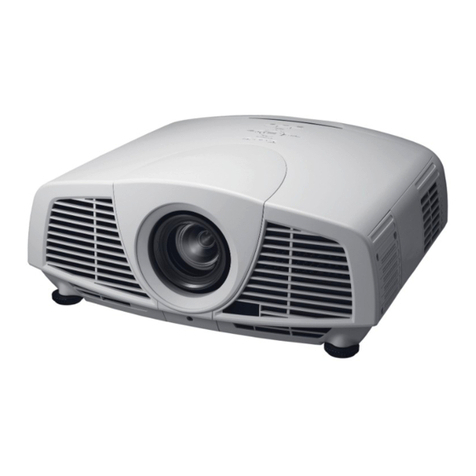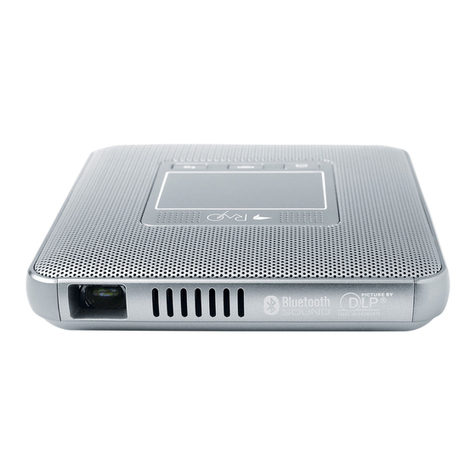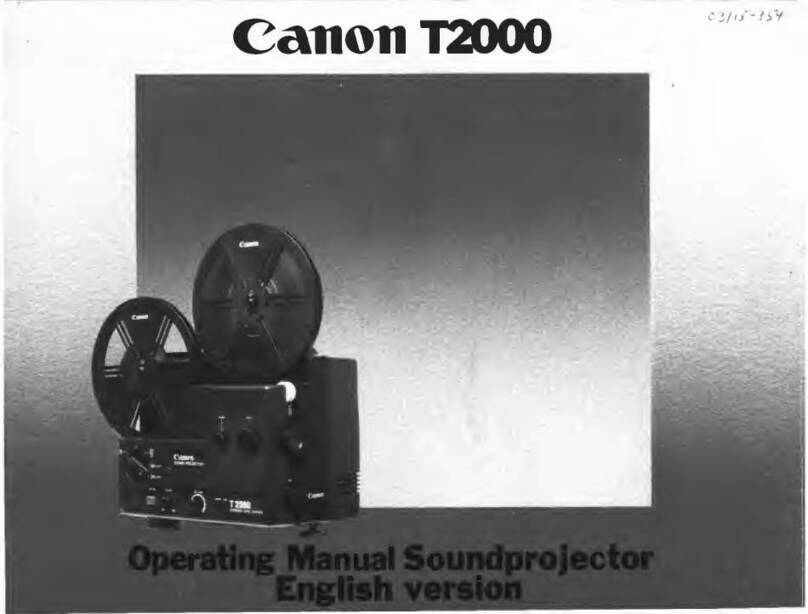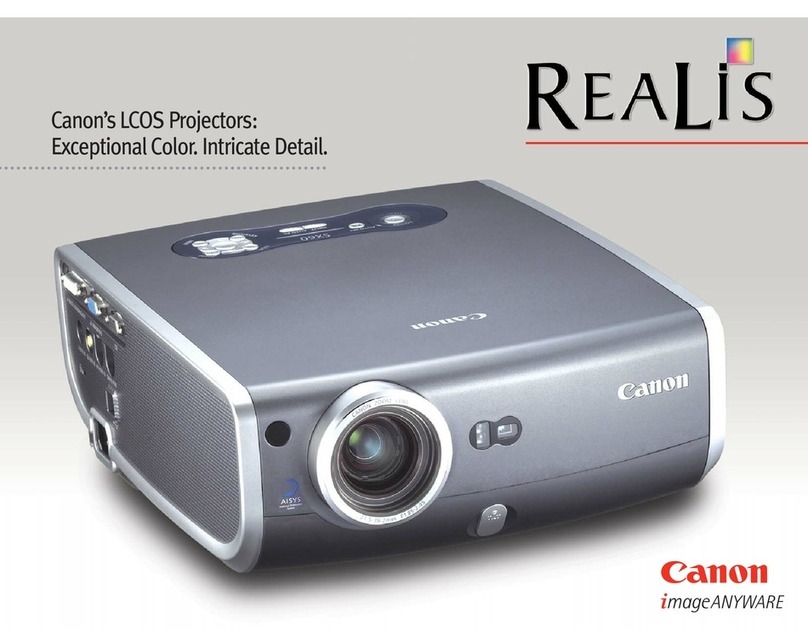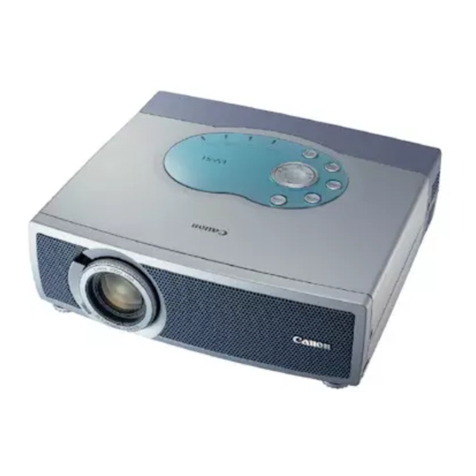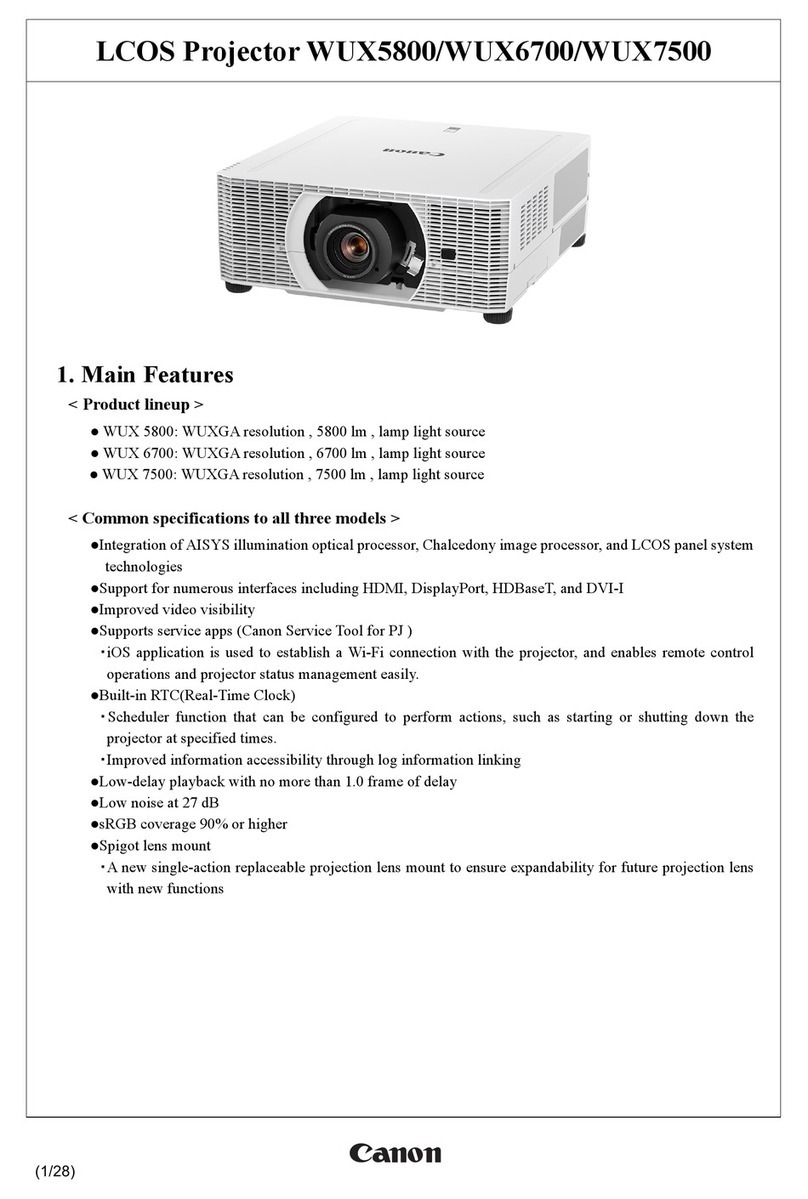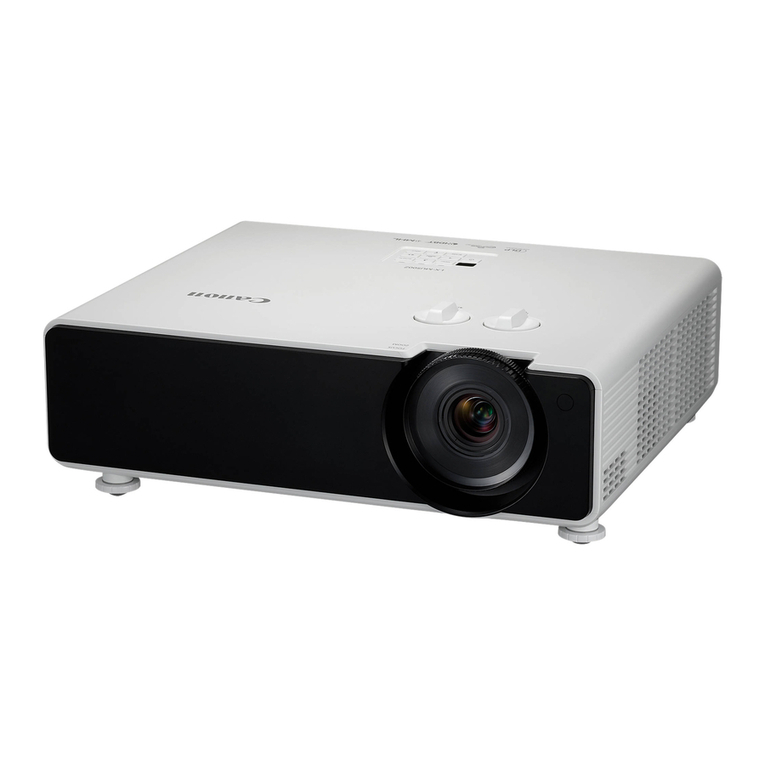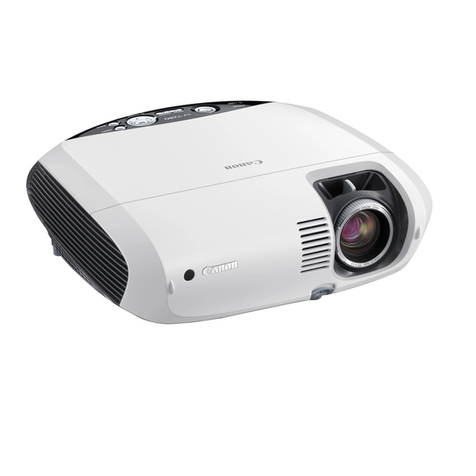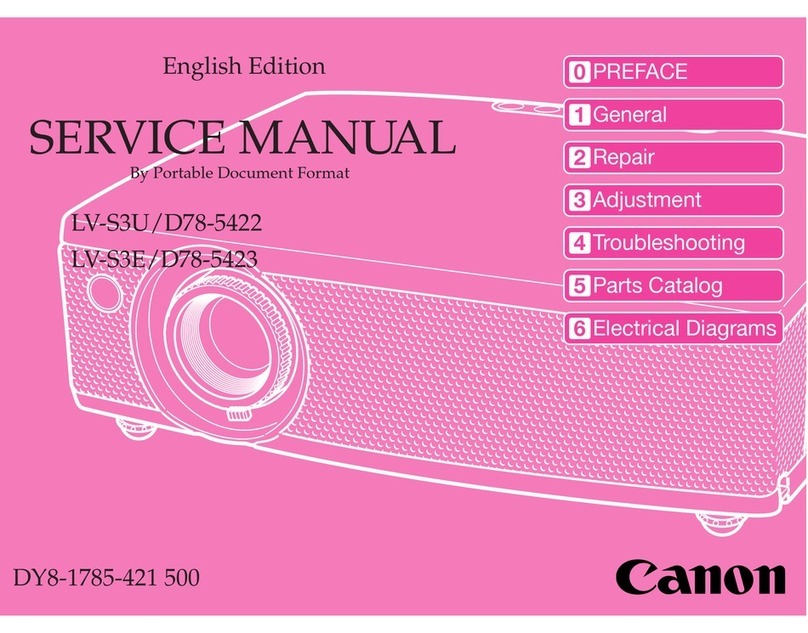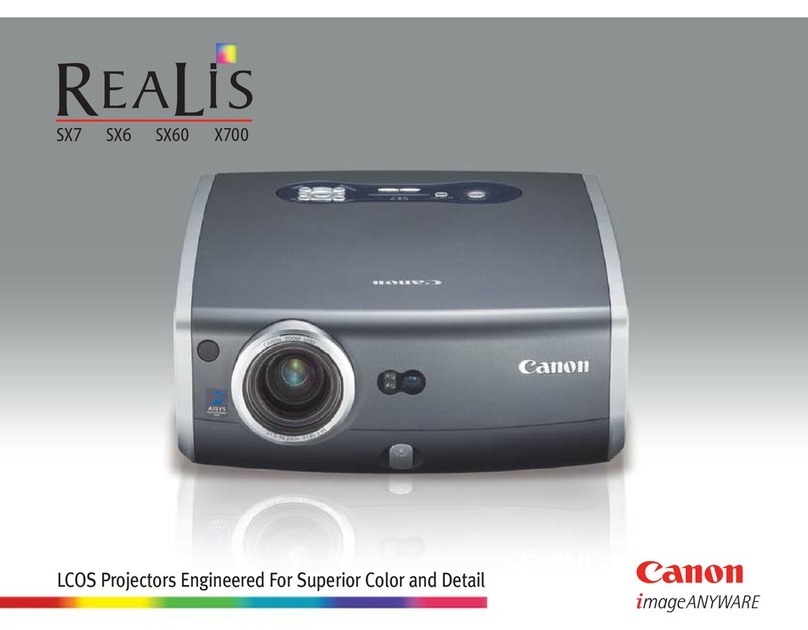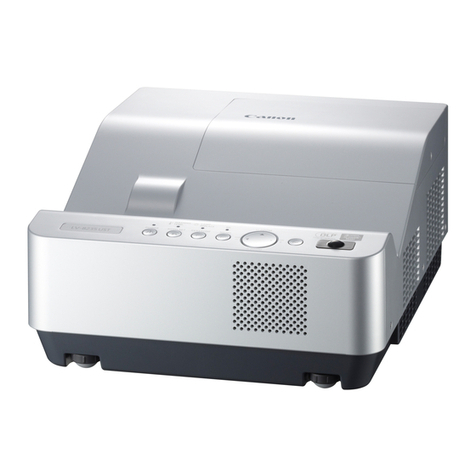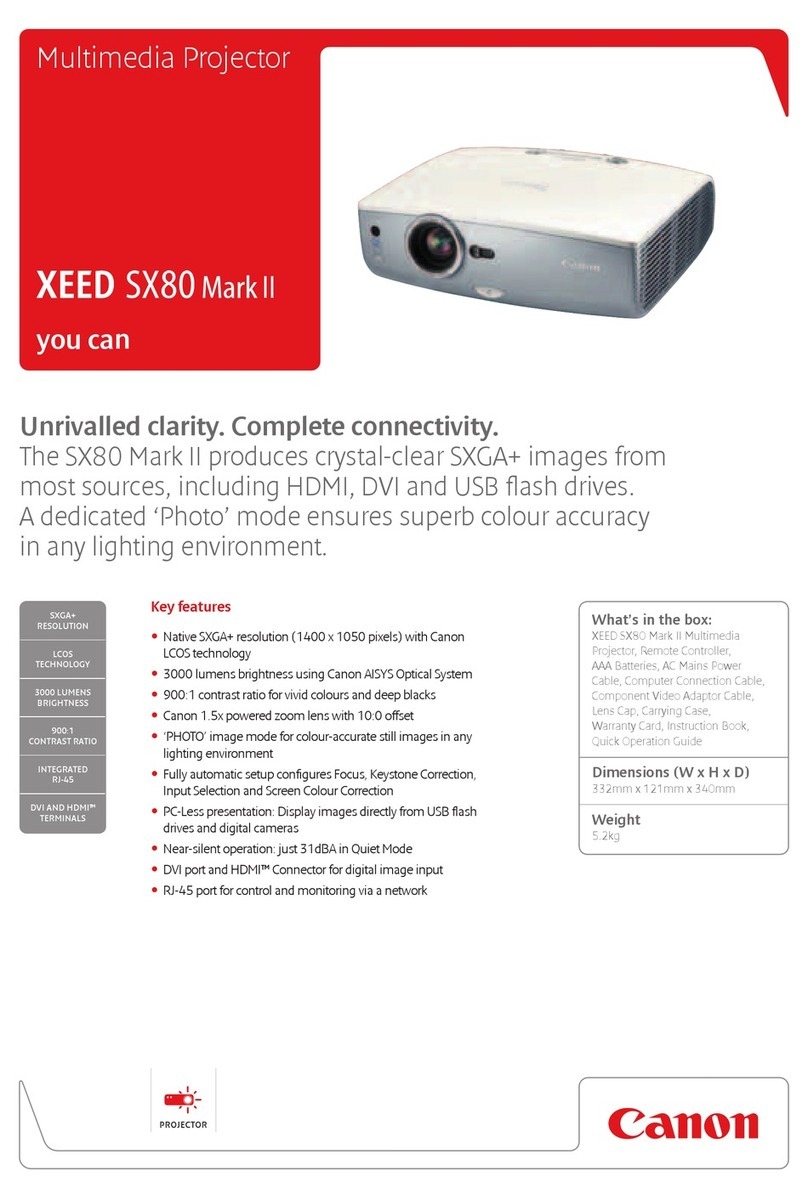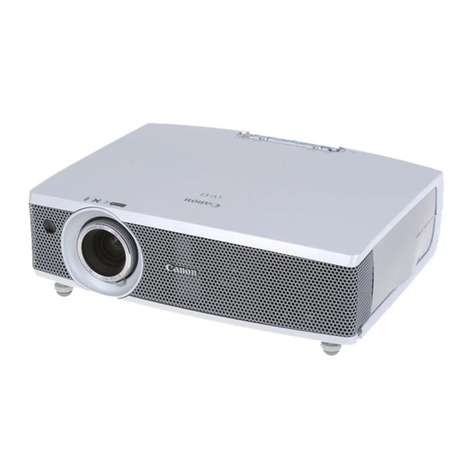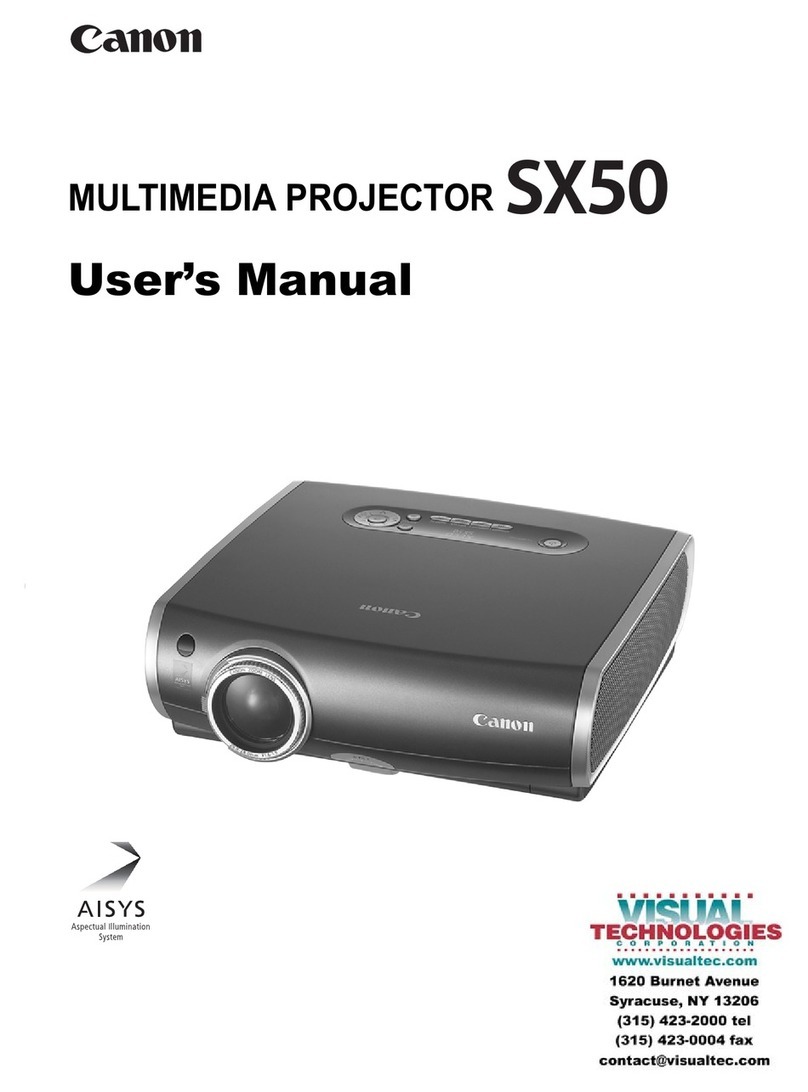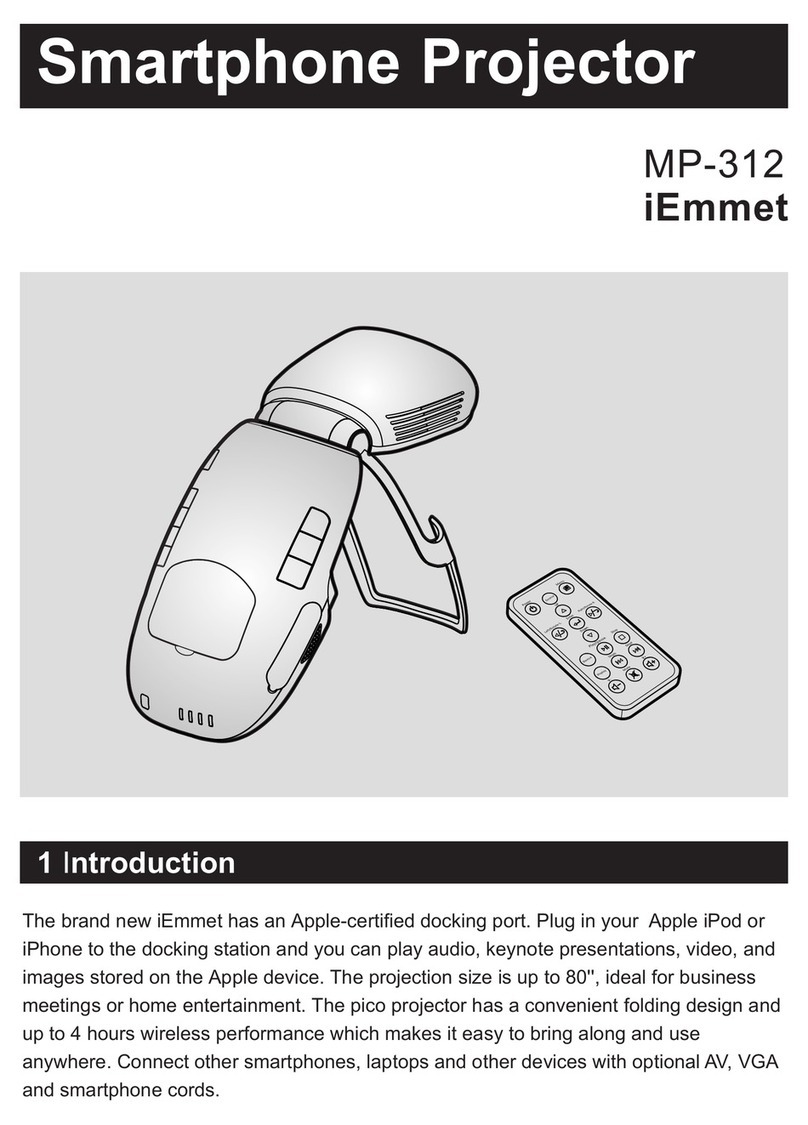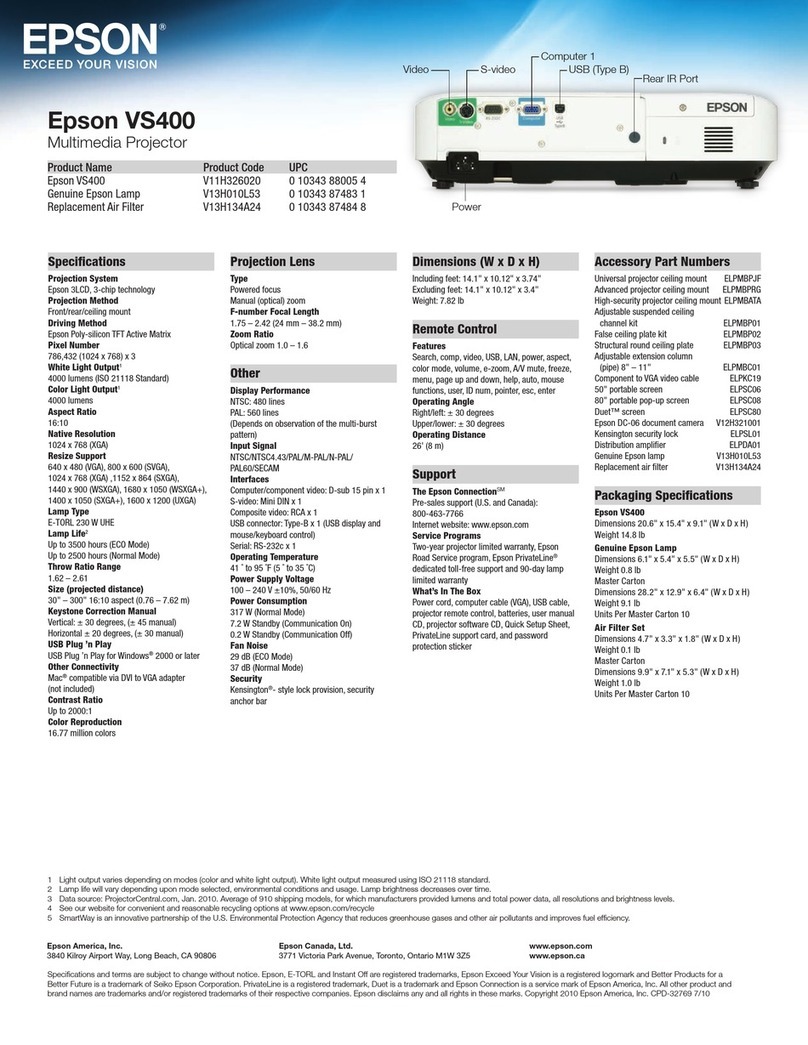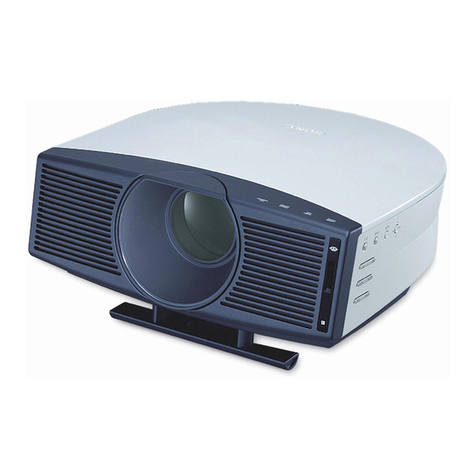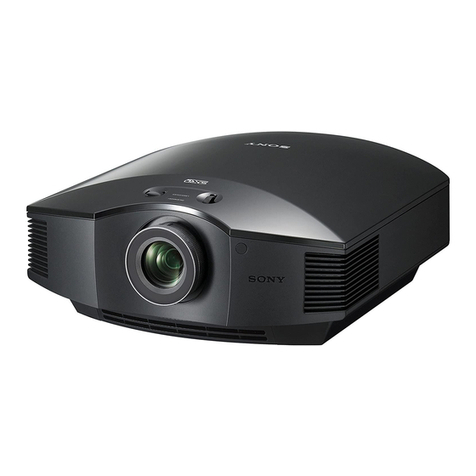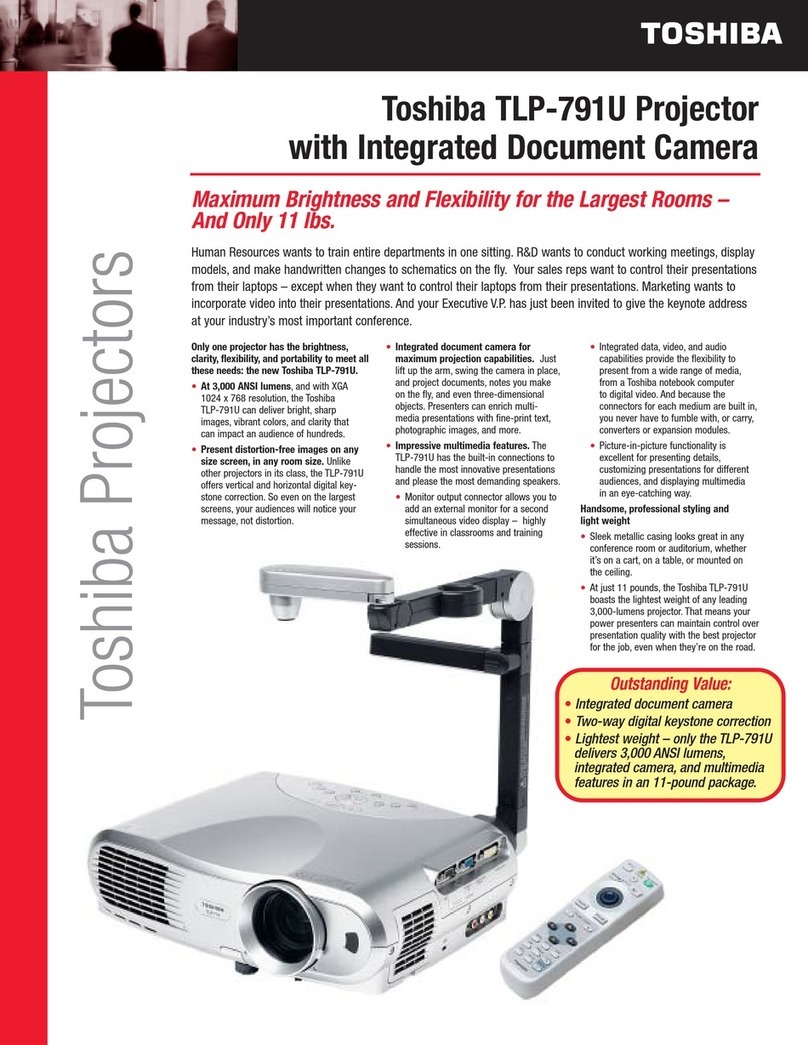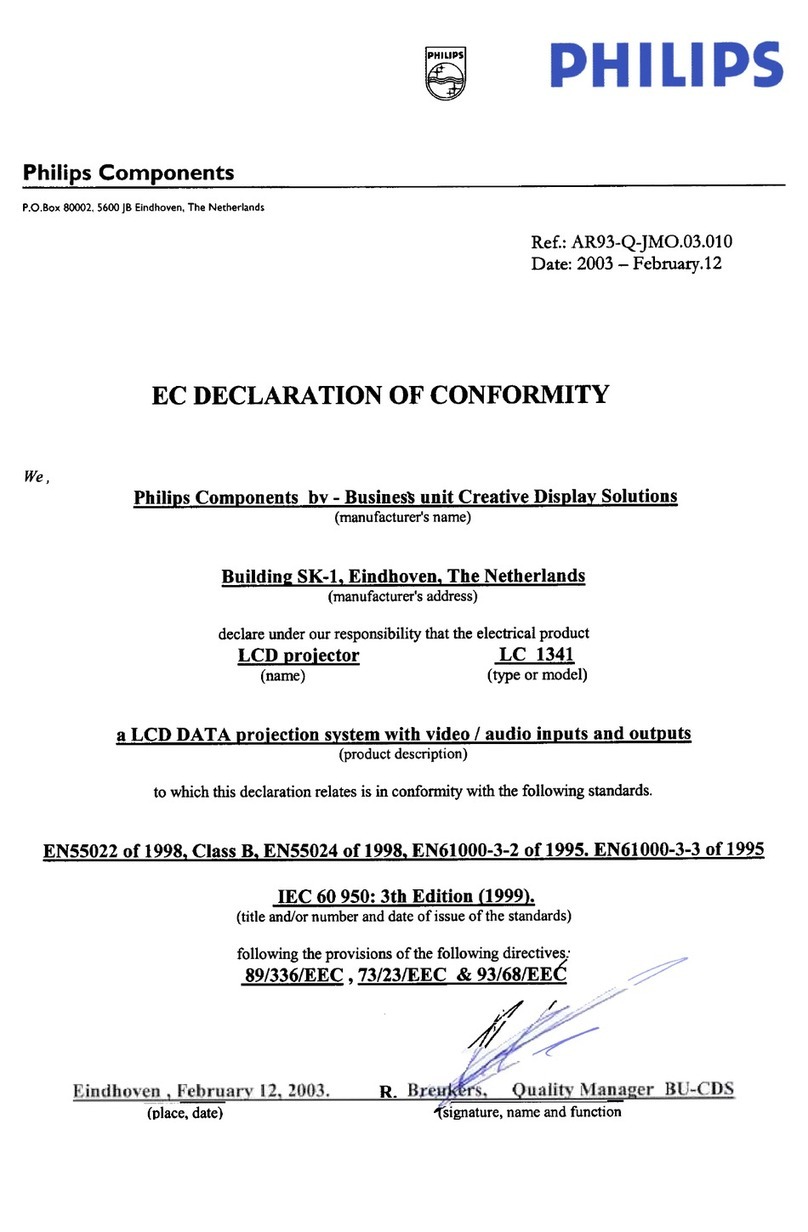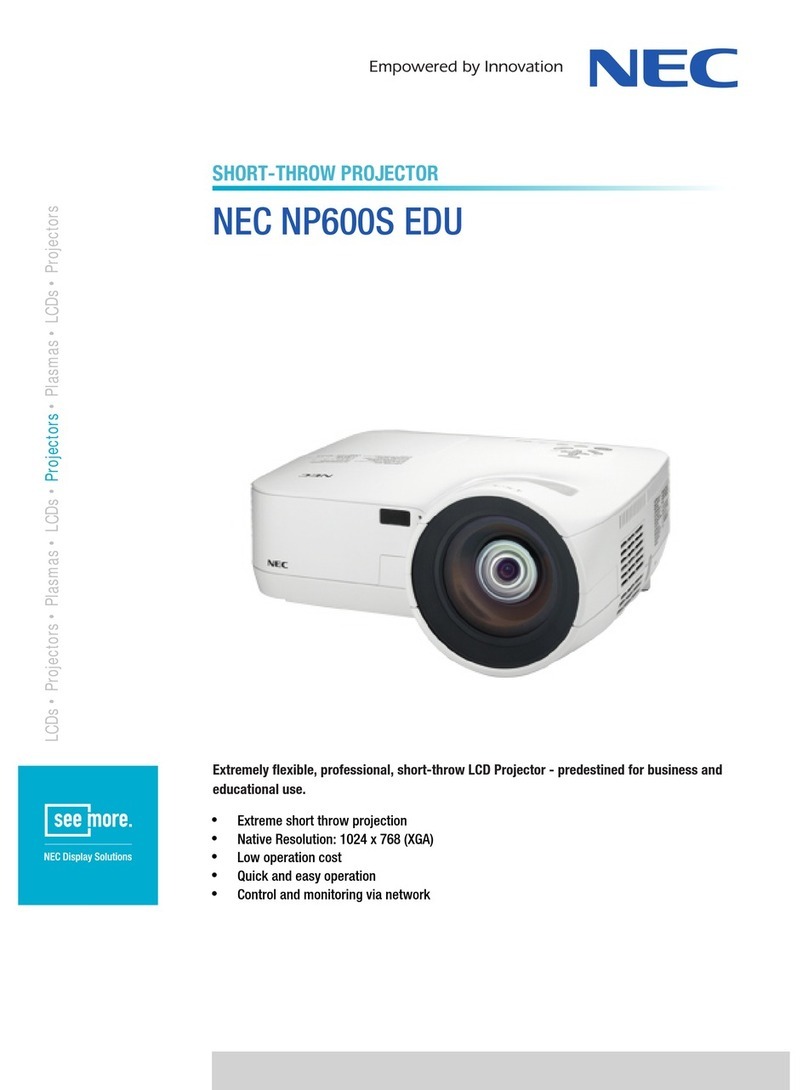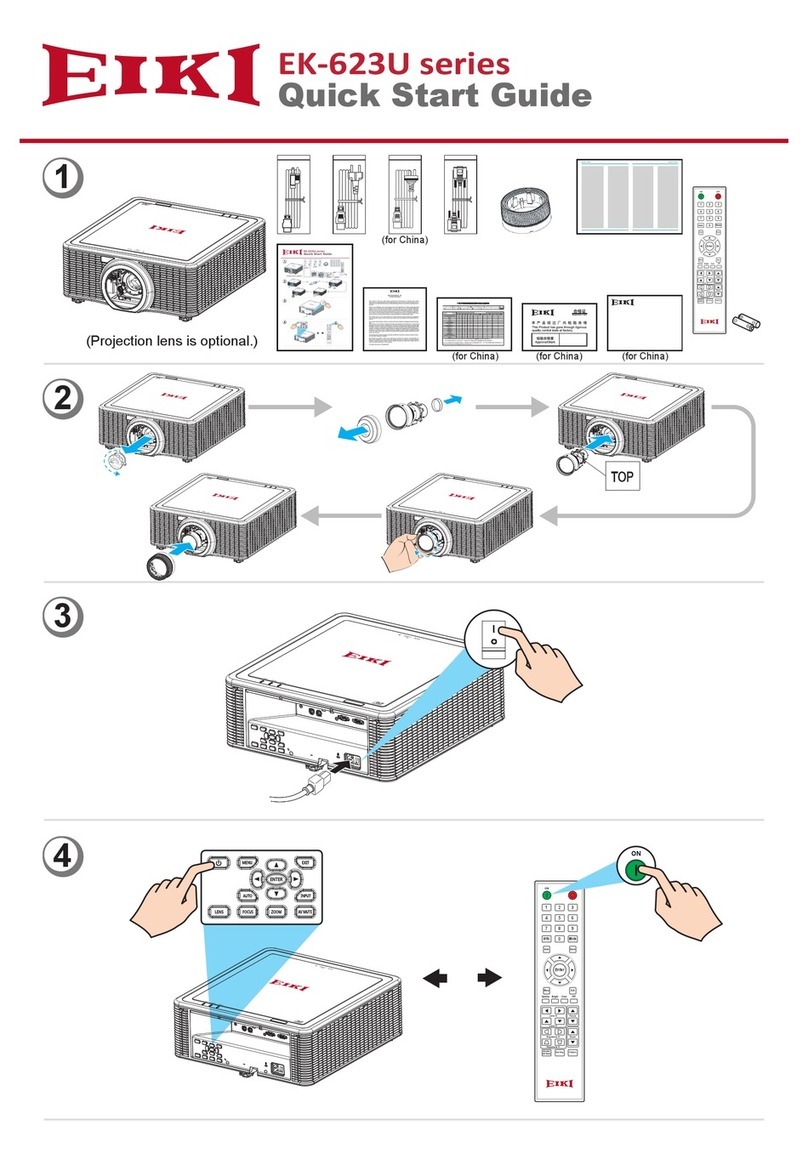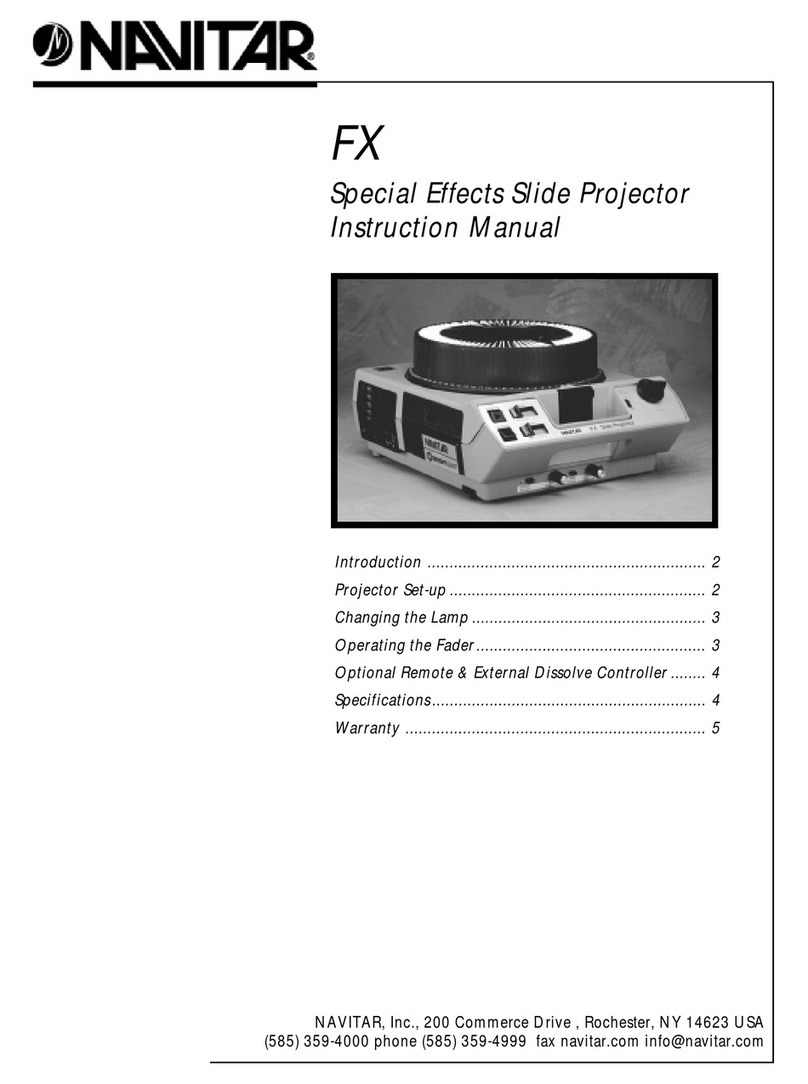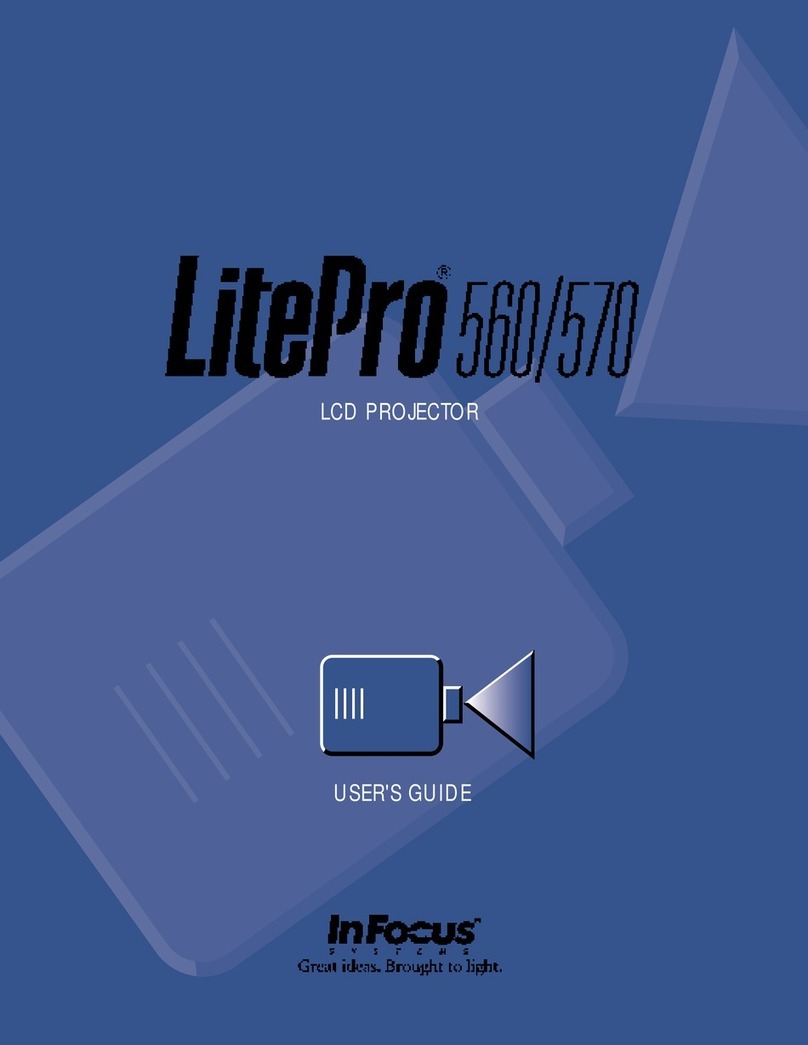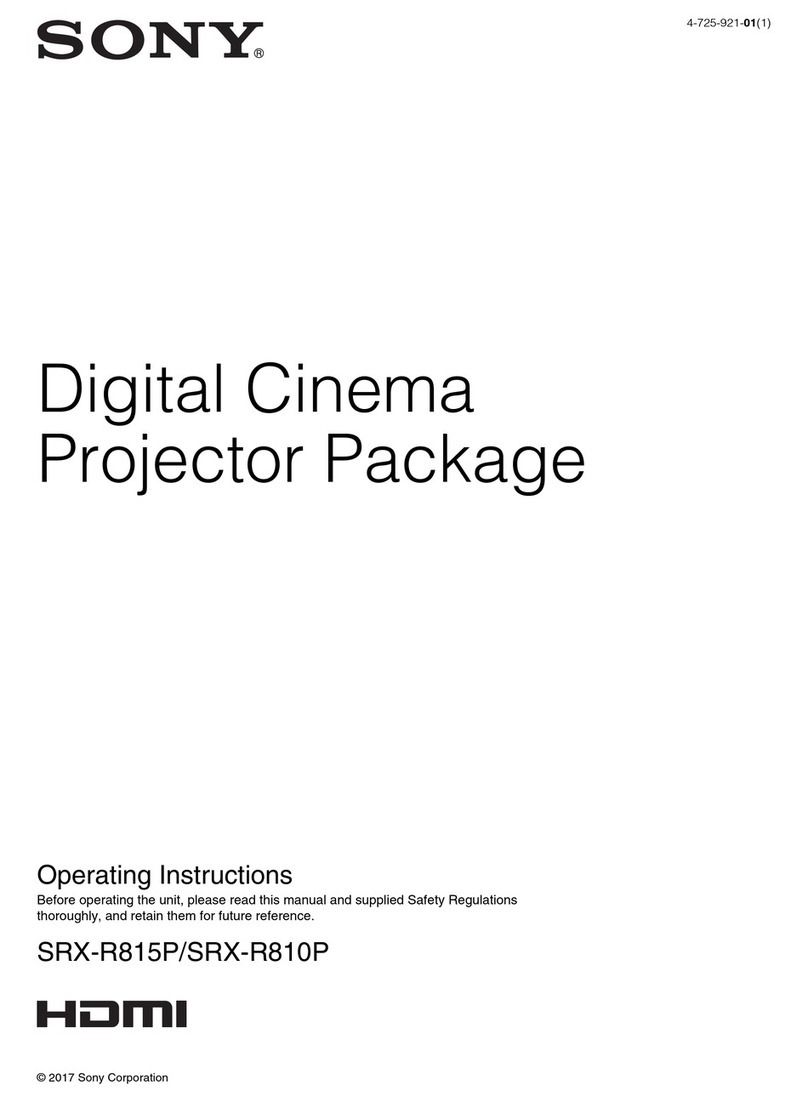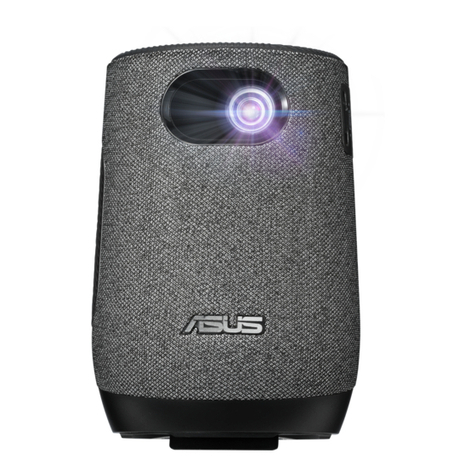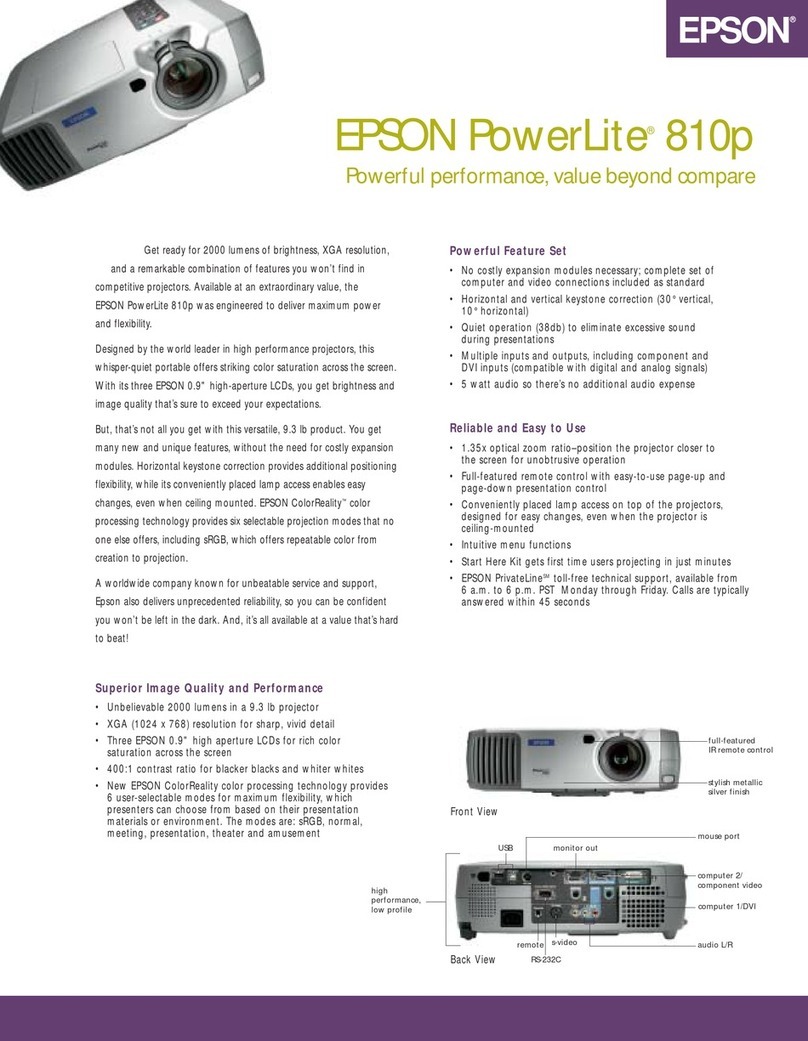CONTENTS
Page
Part 1: General Information
1. FEATURES ...................................................................................................... 1-1
1.1 Development objectives ........................................................................... 1-1
1.2 Product Overview .................................................................................... 1-1
1.3 Major Features ......................................................................................... 1-2
2. SPECIFICATIONS ........................................................................................... 1-3
2.1 Type ......................................................................................................... 1-3
2.2 LCD panel ................................................................................................ 1-3
2.3 Optical box ............................................................................................... 1-3
2.4 Mechanism .............................................................................................. 1-3
2.5 Video/audio .............................................................................................. 1-3
2.6 Connectors .............................................................................................. 1-4
2.7 Standard .................................................................................................. 1-4
2.8 Accessories ............................................................................................. 1-4
2.9 Replacement Parts .................................................................................. 1-4
2.10 Options .................................................................................................. 1-5
3. NOMENCLATURE ........................................................................................... 1-6
3.1 Nomenchtor ............................................................................................. 1-6
3.2 Top controls ............................................................................................. 1-6
3.3 Rear panel terminals ................................................................................ 1-6
3.4 Computer Input terminal / Control port connector .................................... 1-6
3.5 Remote control ........................................................................................ 1-6
3.6 Remote control operating range .............................................................. 1-6
4. COMMENTARY ............................................................................................... 1-7
4.1 Optical System ......................................................................................... 1-7
4.2 Functions ................................................................................................. 1-7
4.3 Design ...................................................................................................... 1-8
5. CONNECTION DIAGRAM ............................................................................... 1-9
5.1 Connection to the computer ..................................................................... 1-9
5.2 Connecting to the video equipment ......................................................... 1-9
6. SETTING-UP THE PROJECTOR .................................................................... 1-10
6.1 Positioning the projector .......................................................................... 1-10
6.2 Installation precautions ............................................................................ 1-10
7. SUPPORTED COMPUTER SYSTEM MODE ................................................. 1-11
Part 2: Repair Information
1. SAFETY INSTRUCTIONS ............................................................................... 2-1
2. LAMP REPLACEMENT ................................................................................... 2-2
3. CIRCUIT PROTECTIONS ............................................................................... 2-4
3.1 Fuse ......................................................................................................... 2-4
3.2 Temperature Protection equipment ......................................................... 2-4
4. MECHANICAL DISASSEMBLIES .................................................................... 2-6
4.1 Cabinet - Top Removal ............................................................................ 2-6
4.2 Cabinet - Front Removal ......................................................................... 2-6
III



